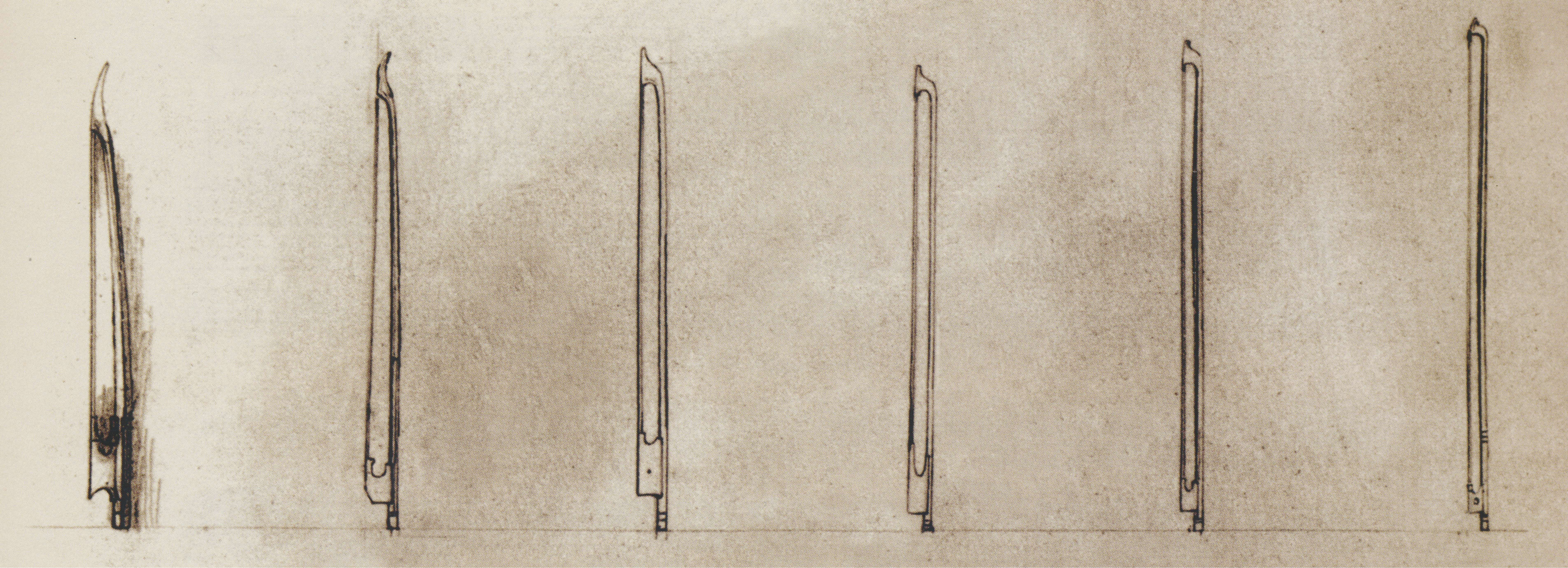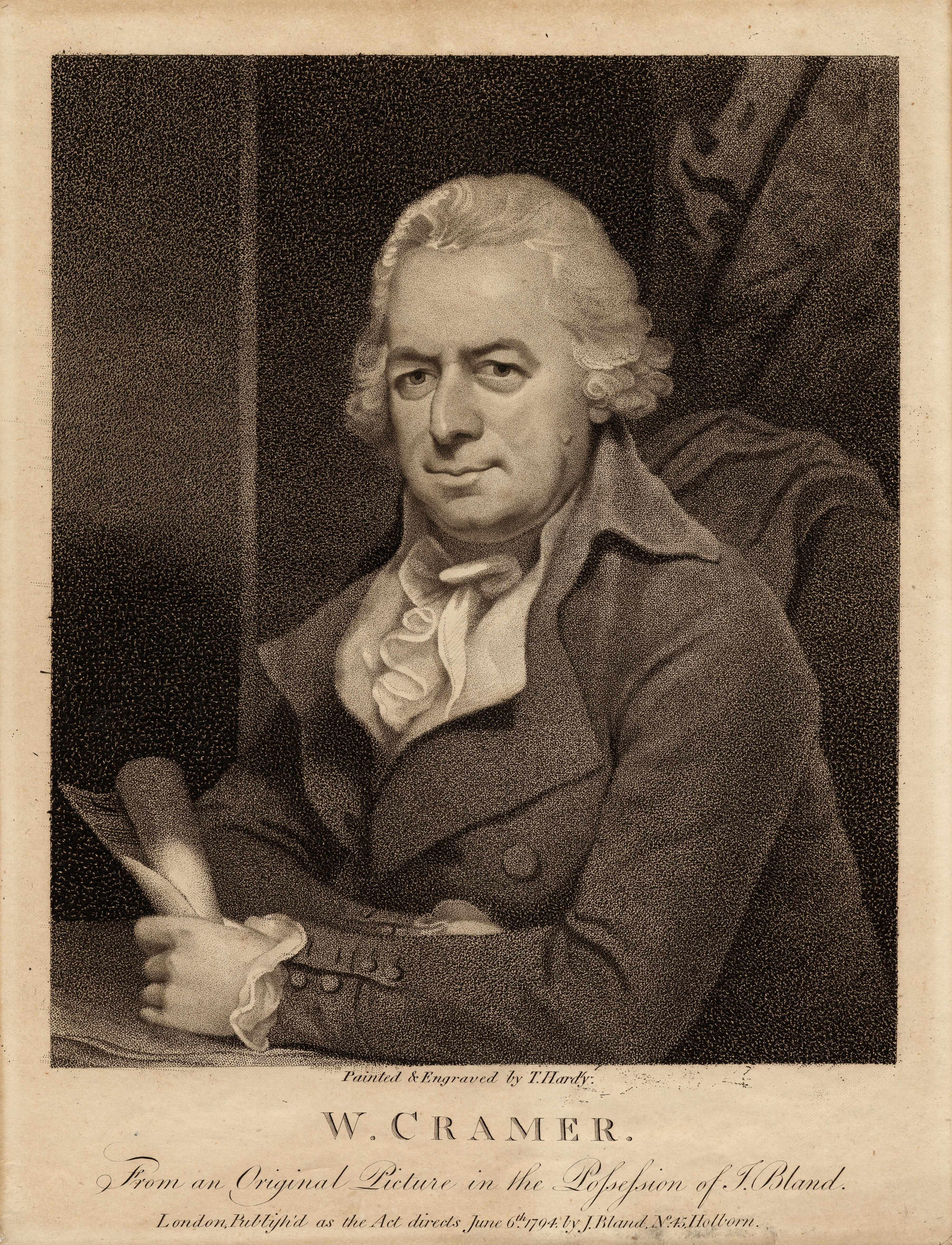Foreword
Much has been written about the history of the violin in the 17th and 18th centuries but research about the radical evolution of the 18th-century bow is still evolving. Unlike the violin which remained more or less constant in form and dimensions from the time of Andrea Amati (c.1505–1577), bows for stringed instruments were subject to ongoing experimentation and enormous transformation until the modern bow emerged in the late-18th to early-19th centuries.
Violinist and bow collector Jérôme Akoka first approached me a year ago to suggest holding an exhibition and symposium in London on the 18th-century bow. Most importantly, he convinced me that this subject appeals equally to musicians and makers; that authentic performance practice and the technical development of the bow are seamlessly intertwined; and that to better understand the music of Bach, Haydn and Mozart one must understand the equipment on which it was originally played. By exploring this subject with interactive formats of round-tables and masterclasses, we hope that modern bow makers and period players will be able to learn from each other and from the artefacts of the past.
To set the stage, let us consider the violin bow at the beginning of the 18th century. The basic specifications of length, weight, materials and form remained greatly unsettled and varied from region to region across Europe. Generally speaking, bows in the late-17th and early-18th century were usually shorter, with lower and more pointed heads than their modern counterparts. The frogs were normally higher than what we are now accustomed to, and were either clipped onto the stick or made adjustable by a simple iron screw. The sticks were made of European hardwoods including ash, yew, pear and ironwood or more exotic imports such as snakewood, logwood and amourette, and were usually concave in camber, lighter at the tip and heavier at the frog.

Pierre Baillot, L’Art du Violon, 1834
Fast forward a century and by 1790–1810 we see bows made by the Tourte brothers that look more or less like the modern bow we use today. The sticks have a convex camber, a standard length and are made predominantly of pernambuco. The heads are almost equal in height to the frogs and are reinforced with metal or ivory. The frogs are made of ebony or occasionally of ivory, the hair is spread at the frog with a metal ferrule and anchored in a covered mortise. The buttons are reinforced with metal.
The goal of this exhibition is to show how a convergence of events led to this dramatic evolution of the bow during the 18th century. The French Revolution and the social and political changes that surround it take centre stage, including the relaxing of the guild system governing production of specialised goods, and the advancements for artisans during the Enlightenment. Expanding New World trade routes played a major role as well, with the introduction of exotic hardwoods from the West Indies and South America often discovered as collateral benefits of the sugar trade and the dye industry.
Perhaps of greatest significance was the growing internationalisation of music, which scattered itinerant players across Europe and stimulated the development and circulation of new ideas and techniques among a growing population. Collaborative efforts between performer and luthier must have played a major role in the evolution of the modern bow but for the moment there is only circumstantial evidence to complete these connections. Legend has it that Giovanni Battista Viotti (1755–1824), Wilhelm Cramer (1746–1799) and Viotti’s teacher Gaetano Pugnani (1731–1798) had collaborative relationships with the Tourte brothers. All three musicians toured widely through the major cities of Europe, in particular Paris and London. No doubt they brought with them new musical ideas and the latest bow designs to share with the Tourtes of Paris and the Dodds of London.

Wilhelm Cramer by Thomas Hardy. Credit: Royal College of Music / ArenaPAL
One point that I hope will be clear in our masterclasses and panel discussions is that we should resist the temptation to view the modern bow as naturally superior to its 18th-century ancestor. The modern bow has evolved to be better-suited to the demands of the music, ensembles and performance venues of the modern era. This does not necessarily, however, make it preferable to use for music from earlier periods. At the very least, 18th-century bows provide an indispensable window to the musical and aesthetic intent of the time in which they were created.
And finally, a disclaimer: in spite of our best intentions there is much that may never be knowable about the bow making of this period. Bows in the 17th and early-18th centuries seem to have been created as workshop productions, made as accessories by junior craftsmen much in the same way as a workshop produced cases and pegs. As such, bows were generally made anonymously and almost never branded. Materials and construction techniques were such that early bows were much less durable and were readily discarded when broken or out of fashion. This complicates the task of the historian and requires us to flesh out our understanding of the evolution of the bow by relying on iconography, historical sources and sometimes informed conjecture.
We are grateful for the diligent and tireless work of those who have made this exhibition and symposium possible. Jean-François Raffin, Christophe Coin, Constance Frei, Bernard Gaudfroy and Kai Koepp have all generously leant their time and invaluable knowledge to the project. Pavlo Beznosiuk, the Chiaroscuro Quartet and Alexander Janiczek have graciously and enthusiastically agreed to lead masterclasses and performance demonstrations. And most of all Jérôme Akoka has given this subject his prime attention for several decades; his enthusiasm and curiosity for the subject is contagious. ■